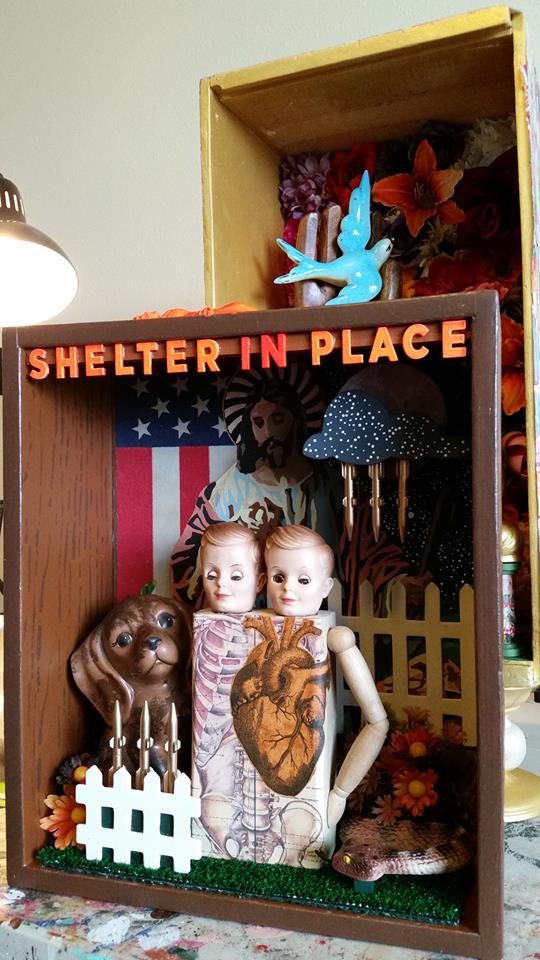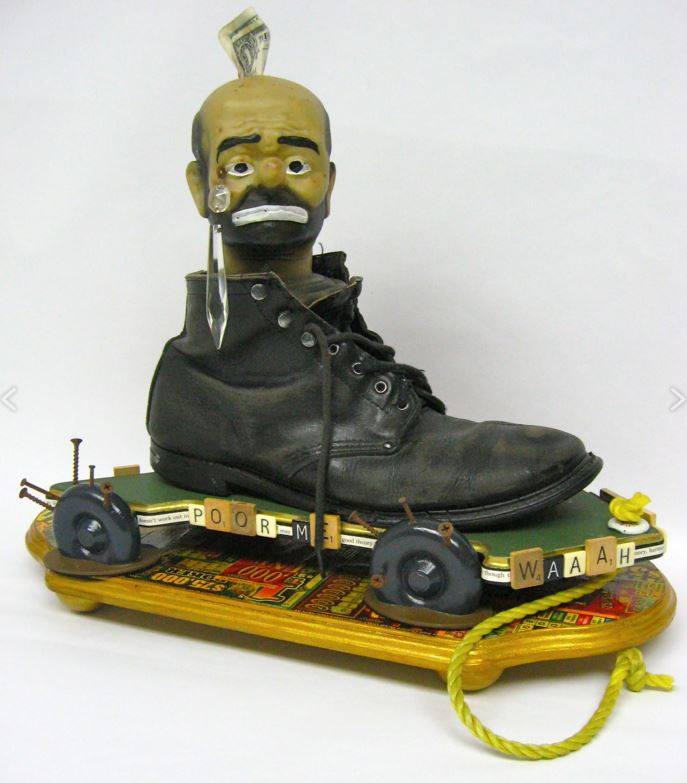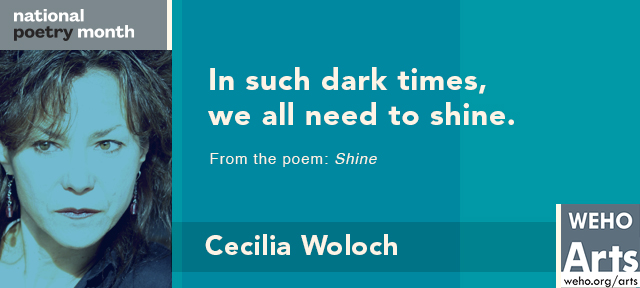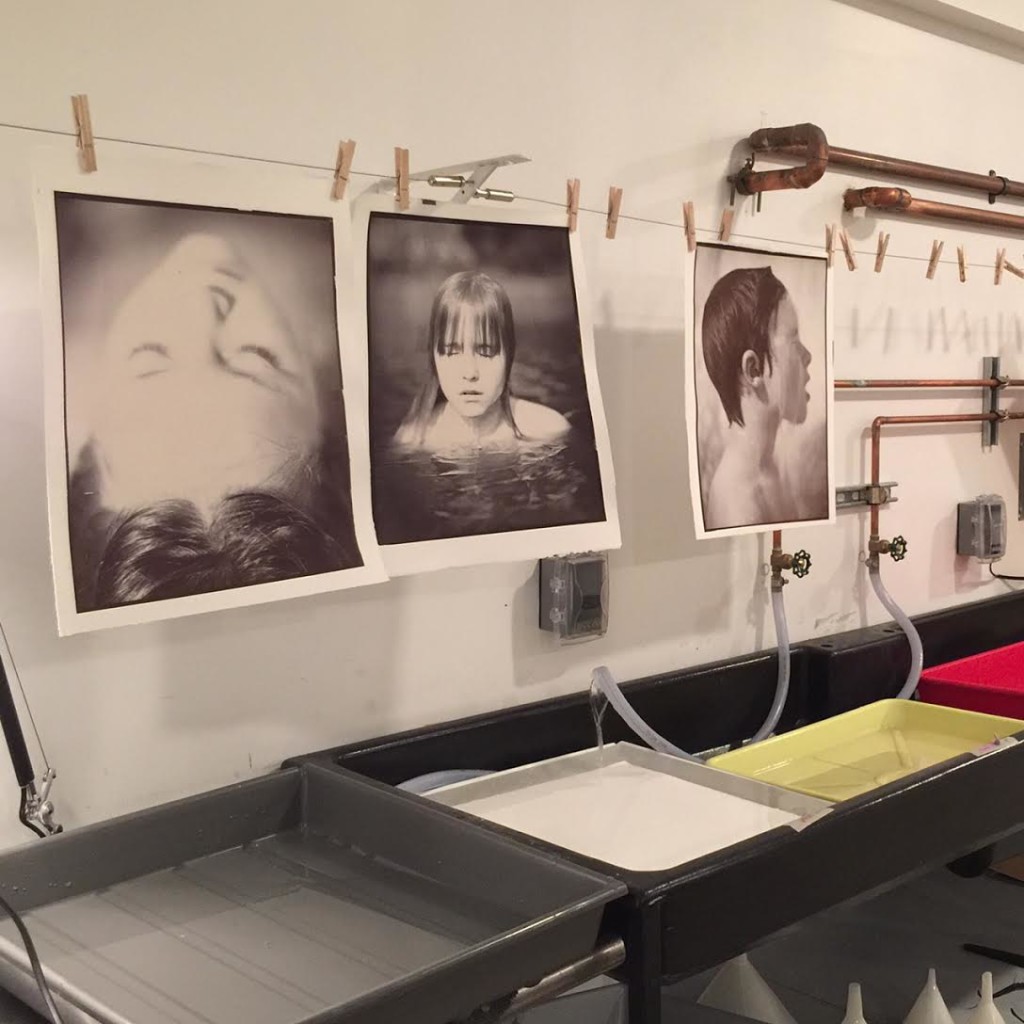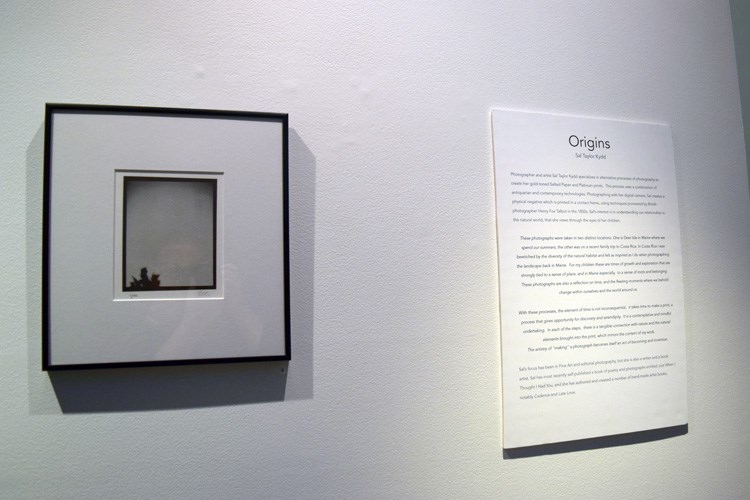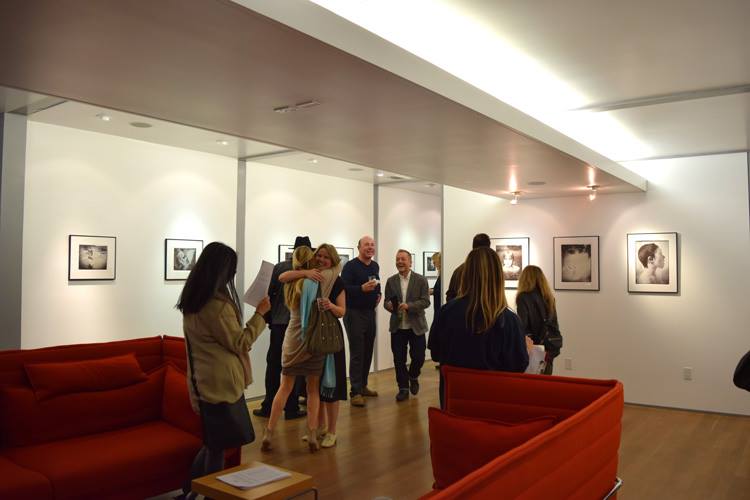
Artist Tom Lasley uses assemblage to create miniature universes with strong statements, about religion sexuality, fame, and fortune. Rescuing objects from thrift shops, yard sales and dumpsters to populate his small but powerful worlds, Lasley says “I combine them with items from craft and hardware stores in ways I hope add up to something poignant, beautiful, meaningful, or at least, funny.”
Lasley has succeeded: his pieces are often mordantly funny and deeply touching, paeans to the absurdity and faith that make us human.
Always attracted to Pop, Folk, and Outsider art, Lasley had no formal art training when he began utilizing his powerful urge to create. Now, with classes at the Art Center College of Design behind him, his works express issues and experiences both physical and metaphysical. He fills his shadow boxes with both old and new objects that evoke personal, significant recollections of a specific event or period of his life. “Or they represent a concern I currently contend with. As objects interact, the autobiographical narrative strengthens and the piece takes form,” he explains.
Lasley’s process revists and sorts through his experiences, and provides a meditation on his personal life history. Certain subjects are re-imagined in a variety of different pieces. “I often return to include my experience as a gay man and how growing up Catholic impacts my current metaphysical beliefs. The objects I select serve as an idiosyncratic, symbolic vocabulary.” The artist notes that although the resulting pieces can be both quirky and surreal, the narrative they present is “cohesive, comprehensible and relatable.”
Born in New York City, Lasley lives in Los Angeles, and his work reflects a mix of New York’s dense urbanity and the Los Angeles cultural touchstones of both nature and celebrity.
Lasley often expresses fears of nuclear holocaust or other devastation, societal obsession with fame, and the beautiful but absurdist events that can occur when man meets nature. In Shelter in Place, Lasley’s carefully detailed diorama touches on his Catholic background with a figure of Jesus watching over a two-headed, one heart human in a world in which weapons of mass destruction rain down from the sky. A white picket fence bearing the signage “Safe” and an overlarge figure of a pleasant looking pet dog speak of security, while a snake in the grass belies that promise.
The artist’s The Young Prince Of The Forest Breaks Wind features Bambi, butterflies, a caterpillar, and the word “Resurrection.” Bambi farts butterflies, which may also have emerged from the caterpillar transformed; a thickly antlered ancestor perches near the Rainbow Bridge, while flowers, a fairy, and skulls co-exist. On either side of the shadowbox, two large, candelabra-like holders contain deer hooves with fringed tops, which take the place of candles. These ersatz candles frame what is essentially an altar to change, metamorphosis, and the taboo yet entirely natural functions of death, passing wind, and growing up.
In Workboot, a sad-eyed clown head rides in a boot on a skateboard. From his head protrudes a dollar bill, and from his ears drip earrings made from chandelier crystals. “Poor me, wah,” is spelled out in scrabble letters along the edge of the skateboard, which also bears nails in its wheels. This piece evokes the plague of the working man – underpaid, bemoaning his fate, and strapped to wheels that may take him to a place he does not really want to go.
Lasley’s As If, Arrogant Youth is a meditation on the ephemeral nature of youth, fame, and fortune. A golden bust wearing a bling dollar-sign necklace and sporting a head of very blonde, full hair, is perched on a table edged with abbreviations of the days of the week. Pills, cigarettes, a heart – these are contained beneath the table, everything this arrogant youth needs to survive – maybe. “As if” is spelled out in glittery gold letters behind the bust, which is framed by two candles, like a saint in a Catholic church. The shadow box itself is a mixed media collage of sensuous-looking young beauties cut from magazines, sparkly beads, and the words “Dream On” placed on the back of the box.
Whether through a child in prayer in Kneeling Bench, or a halo-like frame of pearls in Boy with a Pearl Necklace, Lasley’s religious roots are definitely showing. Boy with a Pearl Necklace evokes an icon-like image; Kneeling Bench is a riff on classic illustrations for childrens’ prayer books. Father and Son each clearly both subvert and follow images of icons down to the gold paint.
Likewise, images of sexual confusion or acceptance show up in pieces such as Gender Dysphoria|The Little Prince, in which said prince is wearing a dress while two gold double-x chromosomes dance behind. Gender Dysphoria|The Big Queen conjures up both areas of Lasley’s life. The double-x chromosomes, the fact that the queen is sporting a male head, are both elements of sexual imagery, while the icon-like crown floating above this queen’s head, and the cross he wears, are both meant to evoke the church and mock its rigidity.
In short, Lasley’s thematic elements are strong; his assemblage and shadowbox worlds each tell a compelling and clearly realized story; his use of recycled materials creates a sense of history even within an historical story. With recent exhibitions of his work at Wallspace Gallery and Gallery 825/LAAA, Lasley has resoundingly proven that his art is not mere “shadows,” but rather a richly realized series of resonant, three-dimensonal stories told in vibrant hues and amusing juxtapositions of recycled materials.




